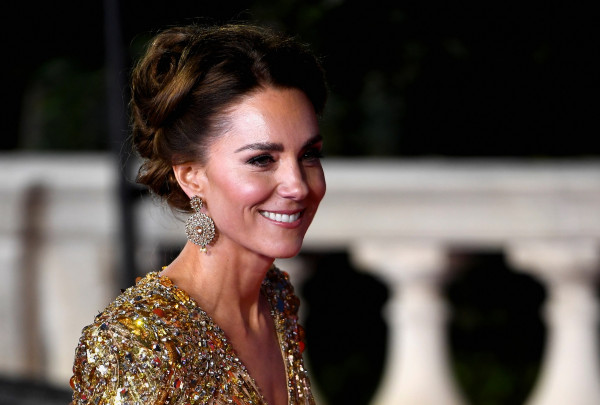Artist Defends Controversial Kate Middleton Portrait Amid Backlash

In a swirl of controversy and artistic debate, the recent portrait of the Princess of Wales, Kate Middleton, unveiled on the cover of Tatler's July 2024 issue, has ignited a storm of criticism and support alike. The artist behind the polarizing piece, British-Zambian painter Hannah Uzor, has stood by her work, asserting that her intent was to capture more than just Middleton’s physical likeness.
The portrait, which has been described as "dreadful" by some social media users and criticized by Daily Telegraph's chief art critic Alastair Sooke as "egregiously, intolerably, jaw-hits-the-floor bad," has put Uzor in the spotlight. Despite the backlash, Uzor remains unfazed. In a recent interview with the Daily Mail, she remarked, "It is a fantastic story -- and they [critics] can do what they want."
Uzor's approach to the portrait was meticulous and thoughtful. She revealed that while many of her paintings typically take only two or three days, the portrait of Middleton took three weeks. This extended period was necessary, she explained, to capture the essence and "soul" of the future queen. Uzor emphasized that her work aims to "challenge assumptions," suggesting that a portrait should convey deeper layers of the subject's personality and life beyond mere physical appearance.
"It's really important to capture the soul of the person," Uzor told Tatler. She spent significant time studying Middleton, observing her in various settings—from family interactions to diplomatic visits—to understand her fully. "Seeing her with her family, seeing her in diplomatic visits, seeing her when she's rowing or visiting children in a hospice. It's been really interesting for me to get a sense of who she is," Uzor elaborated.
The mixed reactions to Uzor's work highlight the subjective nature of art. While some have derided the portrait as amateurish and lacking resemblance to Middleton, others have defended it, appreciating its attempt to go beyond superficial likeness. One critic on social media commented, "I don't understand this painting. I don't see a resemblance to the princess in any way. Not in her features, expression, body shape, skin color."
Conversely, supporters of Uzor's approach argue that portraits are not meant to be photographic replications but rather expressions of the artist's interpretation of the subject’s essence. "Art isn't the same as photography, it doesn't mean to represent a person's appearance exactly as it is but to show the mood, the aura, the feeling about the person that an artist draws," wrote one fan.
Despite the polarized views, the discussion around the portrait underscores a broader conversation about the role of art in capturing human essence versus physical accuracy. Uzor's defenders highlight the emotional and psychological depth the artist aimed to portray, noting how the princess appears serene and genuine in the painting.
Reflecting on the broader impact of her work, Uzor’s portrait of Middleton, whether loved or criticized, has undeniably succeeded in sparking dialogue about artistic interpretation and the ways we perceive public figures. It challenges viewers to look beyond the surface and consider the deeper narrative that a portrait can convey.
In the face of the ongoing debate, Uzor remains confident in her artistic vision. Her focus on capturing Middleton's soul rather than just her physical appearance offers a fresh perspective on portraiture, one that invites viewers to engage with the artwork on a more profound level. As Uzor continues to defend her work, the conversation around the Tatler cover serves as a testament to the enduring power and complexity of art in contemporary society.














